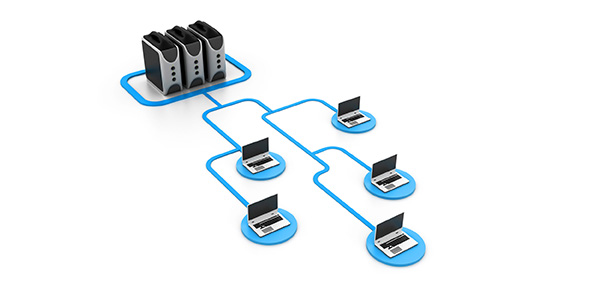Network+ Mesh Physical Topology

This is a practice Network+ test on the subject of Mesh Physical topology.
- 1.
Which of the following advantages does a partial mesh topology provide?
- A.
All nodes have multiple connections to the network.
- B.
At least some nodes have multiple connections to the network.
- C.
Any node can be taken down without affecting network performance.
- D.
Network performance will be similar, no matter what kind of link is used between nodes.
Correct Answer
B. At least some nodes have multiple connections to the network.Explanation
A partial mesh topology provides the advantage of having at least some nodes with multiple connections to the network. This means that not all nodes in the network need to be directly connected to each other, but there are still multiple paths available for data transmission. This can enhance network reliability and fault tolerance, as if one connection fails, there are alternative paths for data to reach its destination.Rate this question:
-
- 2.
Which of the following is the most fault-tolerant WAN topology?
- A.
Partial-mesh
- B.
Full-mesh
- C.
Ring
- D.
Bus
Correct Answer
B. Full-meshExplanation
A full-mesh WAN topology is the most fault-tolerant because it provides multiple connections between all nodes in the network. This means that if one connection fails, there are alternative paths for data to reach its destination. This redundancy ensures that even if there are multiple failures, the network will still be able to function. In contrast, a partial-mesh topology only has some connections between nodes, making it less fault-tolerant. A ring topology relies on a single path, so if that path is broken, the network will be disrupted. A bus topology also has a single path, making it vulnerable to failures.Rate this question:
-
- 3.
If a full-mesh WAN consists of four locations, how many separate connections does it contain?
- A.
Two
- B.
Four
- C.
Six
- D.
Eight
Correct Answer
C. SixExplanation
A full-mesh WAN is a network topology where each location is directly connected to every other location. In this case, with four locations, each location needs to be connected to the other three locations. So, if we count the connections required for each location, we get 3 connections per location. Since there are four locations, the total number of separate connections in a full-mesh WAN with four locations is six.Rate this question:
-
- 4.
If a partial-mesh WAN consists of four locations, how many separate connections might it contain? (Choose all that apply.)
- A.
Two
- B.
Three
- C.
Four
- D.
Five
Correct Answer(s)
C. Four
D. FiveExplanation
A partial-mesh WAN consists of connections between some, but not all, locations in a network. In this case, if there are four locations, it is possible to have four separate connections between each location and the other three. Therefore, the answer "four" is correct. Additionally, if we consider the possibility of a connection between each location and itself, then there would be five separate connections in total. Hence, the answer "five" is also correct.Rate this question:
-
- 5.
Which of the following organizations is most likely to use a full-mesh WAN?
- A.
A school district
- B.
A regional charitable organization
- C.
A regional power company
- D.
A local chain of grocers
Correct Answer
C. A regional power companyExplanation
A regional power company is most likely to use a full-mesh WAN. This is because a power company typically has multiple locations spread across a region and requires a high level of connectivity and redundancy. A full-mesh WAN provides direct connections between all locations, allowing for efficient and reliable communication. This is especially important for a power company as it needs to ensure seamless communication for monitoring and controlling power generation, transmission, and distribution across its various facilities.Rate this question:
-
- 6.
What would happen to the entire network if one of the nodes in a full-mesh WAN failed?
- A.
Performance for all locations on the WAN would suffer.
- B.
The failed location would be unable to transmit or receive data, but other locations could communicate without a problem.
- C.
Data would no longer be transmitted to or from any of the locations.
- D.
The failed location would broadcast errors to every other location.
Correct Answer
B. The failed location would be unable to transmit or receive data, but other locations could communicate without a problem.Explanation
If one of the nodes in a full-mesh WAN failed, the failed location would be unable to transmit or receive data. However, the other locations in the network would still be able to communicate with each other without any issues. This means that the performance for the remaining locations on the WAN would not be affected, and data transmission would continue normally between them.Rate this question:
-
- 7.
A mesh WAN could connect LANs that use the bus topology. True or False?
- A.
True
- B.
False
Correct Answer
A. TrueExplanation
A mesh WAN can indeed connect LANs that use the bus topology. In a bus topology, all devices are connected to a single cable, forming a linear network. A mesh WAN, on the other hand, is a network where each node is connected to every other node. By connecting LANs that use the bus topology to a mesh WAN, it allows for direct communication between all the LANs, enhancing connectivity and communication capabilities within the network.Rate this question:
-
Quiz Review Timeline +
Our quizzes are rigorously reviewed, monitored and continuously updated by our expert board to maintain accuracy, relevance, and timeliness.
-
Current Version
-
Mar 21, 2023Quiz Edited by
ProProfs Editorial Team -
Sep 07, 2010Quiz Created by
Kaelozim
 Back to top
Back to top


